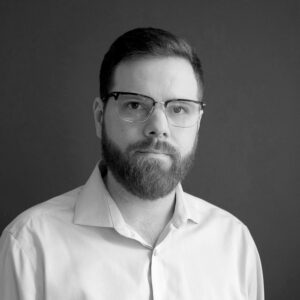Despite being separated only by the Hudson River, a disabled child who lives in New York City could have a dramatically different life than one who grows up just a few miles to the west in a neighboring New Jersey suburb.
In New York, a student with autism could receive special education services that are just above “trivial.” Yet in New Jersey, courts hold schools to a higher standard.
This disparity is at the heart of the argument Colorado attorney Jack Robinson will make before the U.S. Supreme Court in what’s seen as a potentially pivotal case. Robinson maintains that for 34 years, federal circuit courts have been “in disarray” over the level of special education services a school is required to provide its students under the federal Individuals With Disabilities Education Act.
The law states that schools must provide disabled students a “free appropriate public education” in the least-restrictive environment through individualized education programs that are tailored to their needs each year. The court will be asked to clarify whether a school district satisfies the law when it provides a student with “some” educational benefit.
Across the country, disability rights advocates have rallied around the case as a potential win for America’s 6.5 million students who receive specialized help through their IEPs.
The last time the high court addressed the issue was back in 1982 in a case known as Rowley. The court determined then that a public school must provide disabled students with “some educational benefit” but that schools were not required to maximize a student’s potential. The justices also declined to establish a single test to determine if the level of education being provided is sufficient under the law.
That decision was “vague,” Robinson argues, and federal circuit courts have been at odds ever since in trying to determine what it means.
The Supreme Court agreed to accept the new case, known as Endrew, last week. It centers on a boy who attended public school in Colorado’s Douglas County from preschool through fourth grade with an IEP for autism. But beginning in second grade, his behavior began to deteriorate at school. Regularly, teachers removed him from the classroom because he would yell, cry and drop to the floor.
Arguing that the child made “minimal progress” toward his fourth-grade IEP goals and that his fifth-grade goals had not been individually calculated to provide him with “an educational benefit,” his parents withdrew him from public school and placed him in a private special needs school, an expensive alternative they want the school district to pay for.
Although the family and school officials agreed that the private school was an appropriate placement, where he made “academic, social and behavioral progress,” they disagreed about whether it was necessary. After the family sued, the 10th Circuit Court of Appeals found for the school district, ultimately upholding that federal special education law requires schools to guarantee “some” educational benefit. The 10th Circuit judges acknowledged that some other circuit courts have adopted a higher standard.
Two circuit courts have ruled that IEPs must provide students a “meaningful educational benefit,” according to the appeal to the Supreme Court; five others have rejected this higher standard, holding that IDEA requires a “just-above-trivial educational benefit.” Three additional circuits appear to agree with the lower standard, and the Ninth Circuit is split, with different panels aligning with opposing standards. The circuit court in Washington, D.C., has not described the level of benefit IDEA requires.
Because courts have applied different standards, Robinson argues that the amount of help students with disabilities receive can depend largely on where they live. Further, amendments since the 1982 ruling have expanded the federal law’s scope, he said, and the higher standard more closely aligns with IDEA’s mission. The Obama administration agrees.
“There is no justification for providing children with disabilities different degrees of protection under federal law depending on where they happen to live,” Acting U.S. Solicitor General Ian Gershengorn wrote in August in his urging the court to take up the case.
The federal government also moved swiftly this week to make sure special education students in Texas were not arbitrarily being denied services. On Monday, the U.S. Department of Education told Texas state officials they must eliminate a special ed enrollment target unless they can prove children with disabilities are not being deprived of services.
The DOE’s action came just weeks after a Houston Chronicle investigation found that the state penalized school districts that provided special education services to more than 8.5 percent of their students, effectively denying support to tens of thousands of eligible children. Nationally, about 13 percent of public school students have IEPs.
“If Texas can’t say to me, ‘Yeah, we captured 8.5 percent and we put in all of these resources to support our teachers, and our data now shows children included in general education classes with these disabilities are really thriving,’ then it’s a cap to save money,” said Mimi Corcoran, president and CEO of the National Center for Learning Disabilities.
The “some” versus “meaningful” benefit debate for special education services also revolves around money.
“The Rowley decision has been instructive for more than 30 years, so it is possible the Supreme Court could issue a decision that would disrupt the significant body of case law that has developed,” Kathleen Sullivan, chief counsel of the Colorado Association of School Boards, said in an email. “If the Court were to radically alter Rowley, schools could see a dramatic increase in costs to meet whatever the higher standard would be as well as litigation to redefine that standard.”
When Congress established the federal special education law in 1975, it committed to provide states with 40 percent of the funding necessary to establish adequate programming. However, lawmakers never fulfilled their promise, and federal funds hover at just 16 percent.
“The states should go back to Congress and say, ‘We need that money. You’re asking us to do this, we believe we need to do this, it’s the right thing to do — let’s get the resources in place to do it,’” Corcoran said.
Attorneys for the school district have held that the split between circuit courts “is one of adjectives, not outcomes,” and that a decision to impose a higher standard belongs to legislators. A school district attorney declined to comment, and a school district statement said it would be “inappropriate” to discuss pending litigation.
While local and state governments have been left to foot the lion’s share of special education costs, some advocates believe the Endrew case could provide a real opportunity to raise expectations in special education classrooms.
Daniel Unumb, executive director of the Autism Speaks Legal Resource Center, who filed a brief on Endrew’s behalf, said it’s “critical” to establish a uniform standard, though disagreements will always remain on a case-by-case basis around the level of services that should be provided to specific students.
“Once there’s an appropriate standard in place and it’s understood that that is the standard that needs to be met, I think that goes a long way to improving mediation and to improving attempts to avoid litigation,” Unumb said.
‘Parents are inclined to believe educators are really knowledgeable and working in their kid’s best interest, so it’s really important that educators themselves begin to understand what their role is and what the goal should be for [special ed] students.’
Michael Churchill, an attorney at the Public Interest Law Center, which joined Autism Speaks in its Supreme Court brief, agrees that a higher standard would be helpful for students with disabilities. Unless standards are explicitly established in the law, he said, educators and students alike are allowed to lower their expectations. And while most families aren’t in a position to sue for better services, simply setting an expectation could benefit all students.
“Unless parents belong to a strong support group or have advocates that they’re working with that know how to go through the due process, they usually stop at the IEP conference,” he said. “Parents are inclined to believe educators are really knowledgeable and working in their kid’s best interest, so it’s really important that educators themselves begin to understand what their role is and what the goal should be for these students.”
Yet Ruth Colker, a law professor at Ohio State University who has written extensively on special education, is less optimistic about whether defining the educational standard will have a profound effect on the educational services disabled students receive.
“I go to a lot of meetings at school districts, and I’ve never had anybody at a school district IEP meeting talk about whether in Ohio we use the de minimis [trivial] standard or the meaningful [benefit standard],” she said. “On the ground, you talk about, ‘What’s the evidence? What kind of progress was the child making in light of that evidence? What kind of IEP should we have going forward?’”
Instead, she said, the conversation should focus on improving the way schools document students’ academic progress from year to year, and providing parents with better help in the IEP process. Under the law, parents are allowed to participate in IEP meetings and can file due process complaints if they believe their child is making insufficient progress.
But often, she said, parents aren’t experts in special education law, and because some disabilities are genetic, parents often struggle themselves. In order to champion effectively for their children, parents often need to hire an advocate for help, which can cost thousands of dollars.
“I think every child should have an advocate in the IEP meeting, helping to make sure that we get the right results,” she said. “I’m more troubled by the lack of advocates at the IEP meetings themselves, I think that’s the real problem for children who aren’t getting appropriate educational plans.”
Get stories like these delivered straight to your inbox. Sign up for The 74 Newsletter


;)
